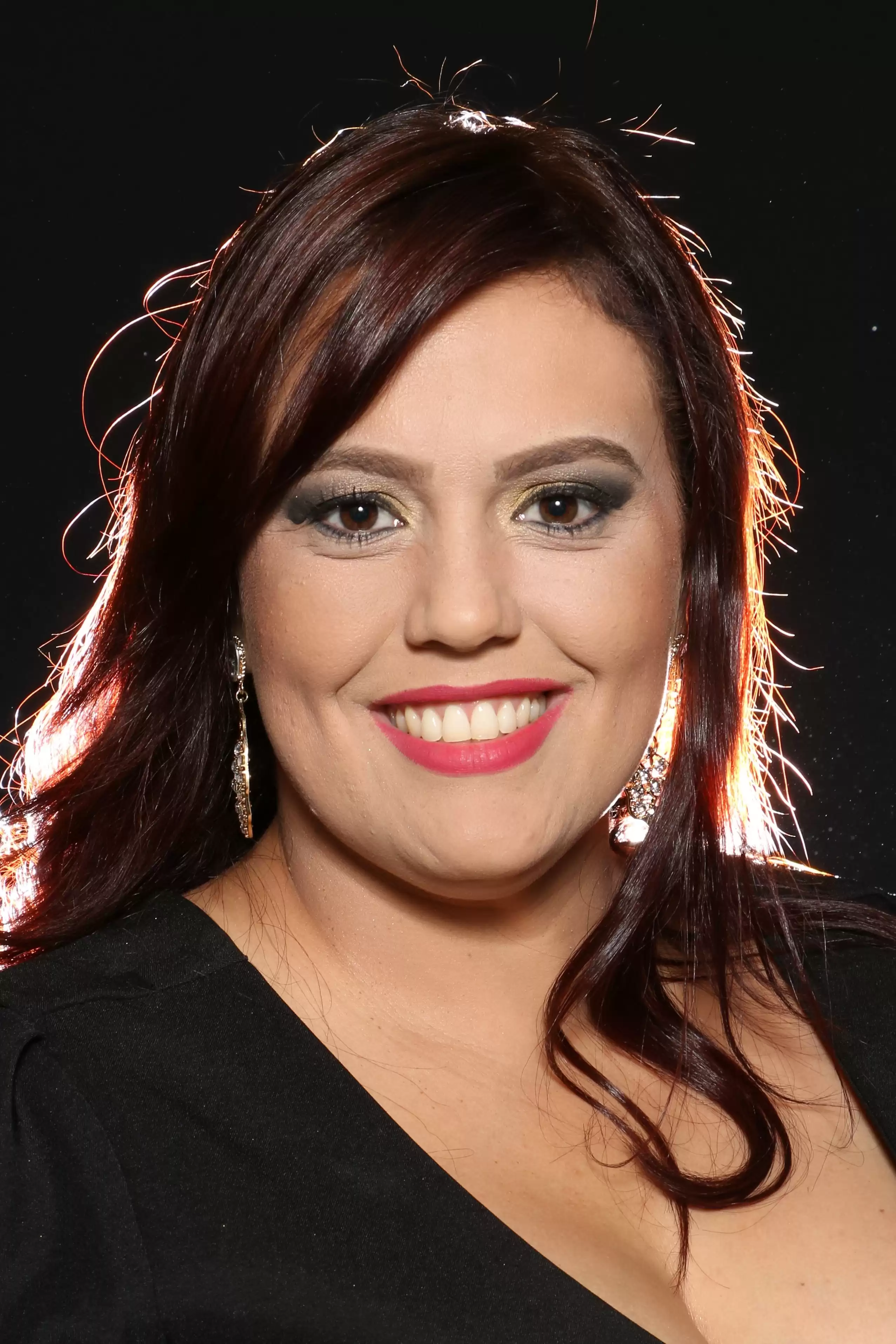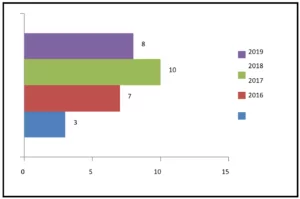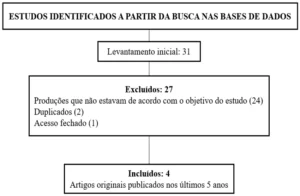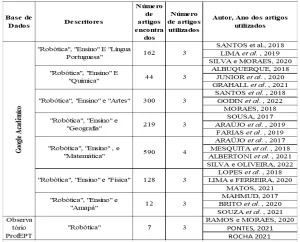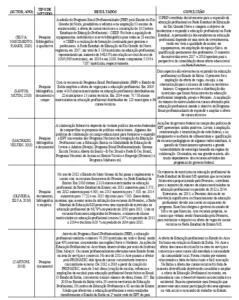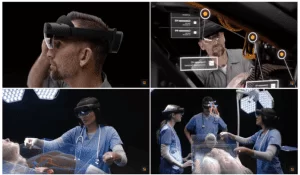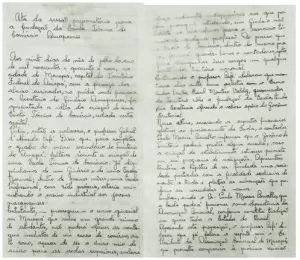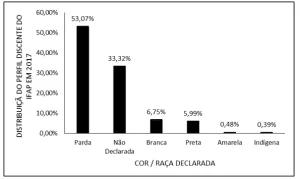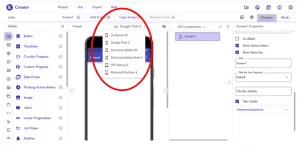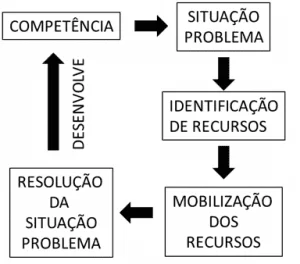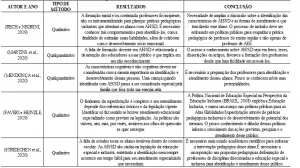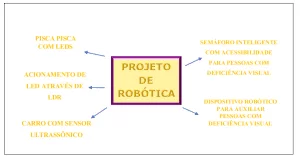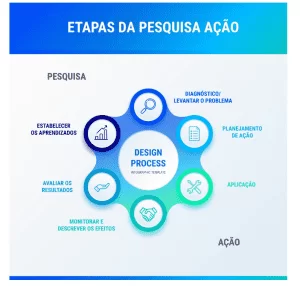MATIAS, Noelle Campos de Aguiar [1]
SILVA, Tatiana Alves [2]
MATIAS, Noelle Campos de Aguiar; SILVA, Tatiana Alves. Difficulties faced by the professionals of physical education front the inclusion of students with hydrocephalus in physical education classes. Multidisciplinary Core Scientific knowledge magazine, 1 Year. Vol. 10, pp. 39-62. November of 2016-ISSN. 2448-0959
SUMMARY
This article was prepared by bibliographic references for the subject of this study. Primarily focus on this article sought to understand the difficulties faced by the professionals of physical education when the process of inclusion enough in their classes, understand the difficulties physical education professional in managing the progress of the class where present students with special educational needs, noting its limitations and psychomotor skills, so as to insert it in the jokes and playful games experienced in physical education classes along with the other students. Currently the number of students with hydrocephalus has increased, enforcing the law and include professional education of physical education. The inclusion is a process that involves all participants in the school context, and within that context the teacher identity and shape produces an exchange of learning, providing varied and appropriate content through their age group. New studies involving students with hydrocephalus are needed to break paradigms involving professional and the importance of discipline within the process of school inclusion.
Keyword: school inclusion. Adapted physical education. Hydrocephalus.
INTRODUCTION
Informal observation of professional work of physical education during their classes within the schools points several difficulties faced in the development of activities organized for students with special educational needs. The conviviality in practical classes with special students suggests a continuous formation that intensify the theory and encourage the practice.
The initial contact with students happens during its formation, through the stage, within this step has a chance to form their identity and know their students. Faced with the peculiarities and specifics of each student understands the need of professional discipline adapted physical education during its formation and later during your classes when the same form. (GIANOTTO; DINIZ, 2010)
The process of inclusion involves a physical education professional trained, all students, families, society and the school institution. Inside the school, physical education discipline has a pedagogical role that promotes the development of the student as a whole, making very important tool during the process of inclusion of the particular student. In the development of the discipline, the teacher can use a variety of content and features, through a flexible class scheduling, in order to facilitate the inclusion of these special students in class, thus breaking the paradigm formed on top of the teacher and of the discipline.
Include a student within the school context requires a look that provokes Integrator on each individual change of concept, creating a bridge part of common sense and goes to the critical sense, showing the inclusive education not only students with disabilities, but also the students without disabilities, using an essential tool called education. Education allows us to organize our physical and mental capabilities reminding us of how adaptable the atypical conditions and able to develop our skills.
Is right granted students receive free education, and based on the guidelines and Bases for national education (Law No. 9,394 of December 20, 1996), which States that the offer of special education is the duty of the State, beginning in the age group of zero to six years during early childhood education (Art. 58, § 3), you can highlight the importance of the inclusion of students with special needs at the beginning of school learning. (BRAZIL, 1996)
Physical education became an extremely inclusive, discipline and physical education professional is directly connected to the inclusion of students with different educational needs. Students with hydrocep[3]halus * commonly has enrolled in regular education, and this increase of pupils with special educational needs that sort of became an aggravating that hinders the participation of the same in physical education classes, not the existence of the disease but by the difficulties that guide your school inclusion.
The child with hydrocephalus has its differences and the school has to understand and plan a dynamic education using a democratic administration, sensitive to student and educating with love and responsibility.
Noting the work of the professional of physical education that promotes the development of motor and cognitive skills of your students, you need to understand the difficulties of professional physical education in controlling the progress of the class where present students with hydrocephalus, noting its limitations and psychomotor skills, so as to insert it in the jokes and playful games experienced in physical education classes along with the other students.
"The pedagogical practice of inclusiveness in gym class coming up in historical difficulties that are related to the understanding of its action." (FALKENBACK; et al., 2007). Realizing the confusion of content that actually meets the pedagogy of teaching of disciplines, where it promotes the development of an active citizen and aware of its autonomy and not just an athlete who will be required to improve always.
"We know that physical education is a discipline that takes the student to reflect, through the movement, their actions and needs facing the demands of today's society in which this need to position themselves." (COSTA, MAUNG, SAMUEL JUNIOR; 2009)
The student with hydrocephalus will only be able to be included in physical education classes the teacher understand your specificity and be able to plan your class to meet your entire class. "Since the inclusion is not limited to putting the child in the school, she can interact according to their potential with other children." (SHARMA et al., 2010)
The physical education professional has this primary school inclusive participation, breaking the paradigms and preparing to develop a workshop to promote the integral formation of the student with and without disabilities, leaving aside the difficulties of school inclusion that limit future studies on the subject.
1. SCHOOL INCLUSION
1.1 formation of physical education professional
The physical education professional training needs to be conceptualized, continued and respected. Must contain second Ferreira; Saints; Costa (2015), a set of actions that involve power, culture, belief and a way of guiding the training. (FERREIRA; Saints; COSTA, 2015) (1)
Must then involve a practice more intense upon the theory that has been taught during physical education professional training enabling involvement with reality. According to Ferreira; Saints; Costa (2015):
The methods of training are governed by concepts, goals and purposes, contingenciadas for academic, social, political factors, financial and personal, reflecting world views, in General, of the educational process and, consequently, expectations about being a teacher and the teaching function. (FERREIRA; Saints; COSTA, 2015) (1)
Professional development for Fernandez; Saints; Costa, (2015) (1) can get from the same interest in continuing education, where the teacher realizes that these processes are aimed at preparing to form individuals into the labour market.
By darido (1995) (2) and Betti & Betti (1996) (3), claim that the professional of physical education has two curricula: the traditional, which emphasizes the know-how to teach, separating the theories which in turn are presented in the classroom and the practices, which are presented in court, pool or other. The scientific curriculum, says the important thing is, teach, being necessary the theoretical knowledge for understanding learning school.
The initial training of teachers includes training course in teaching, providing the experience of everyday life. (CUNHA; et al., 2016) (4) therefore, Gianotto; Diniz, (2010), considers the essential stage in terms of presentation of the theory to practice, where the student wants to become a teacher and the teacher has the opportunity to build your professional identity (GIANOTTO; DINIZ, 2010) (5)
This contact with the new invites you to fit in a space for Inclusive physical education because according to Fiorini and Manzini (2014), the Physical education teacher is one of the participants involved in the educational inclusion. The professional should know their students and their specificities, respecting his understanding about his disability, limitations and also their skills, must have initiative to meet the school, society, providing the individual with the knowledge from significant content and pleasant. (FIORINI; MANZINI, 2014) (6)
1.2 the adapted physical Education in school
It is understood that physical education discipline leads students to reflect and position in society through actions and movements, adapted physical education already understands and develops skills, promotes actions that enhances independence and autonomy in the student's capacity to manage its social and educational potential. (COSTA; MOREIRA; Junior, 2015) (7)
Souza (et al., 2011) argues that inclusion is able to help the student to develop language, thought, socialization, self-esteem and initiative, preparing a citizen with a critical sense capable of participating in the construction of a better world regardless of their disability. (SOUZA; et al, 2011) (8)
Include students with or without disabilities in a physical education class providing their autonomy will require physical education professionals a range of activities. "The physical education comprises a series of content". (By DARIDO; Junior, 2007) (9) the authors Ab and Duarte (2005) argue that organize these contents the disabled student understands its limitations, improves your performance during the activities, knowing what is autonomy and development of body awareness. (AB; DUARTE, 2005) (10)
"It then becomes essential for the physical education classes before their various content can improve the quality of life of these" students ". (BARRETO, et al., 2013) (11) promoting along with the professional of physical education, a necessary adjustment to the student.
According to RODRIGUES (2006) (12) discipline may take two situations as for inclusion, she can help or hinder, depending on the situation and the condition that the student receives discipline, teacher and parents. But what actually makes physical education valued is the ability of body awareness that the student develops during class.
"Thinking of school physical education is also to reflect on the potential and possibilities of each student movement, without prioritizing your disability and/or its limitations". (Palm; Manta, 2010) (13)
Given this, one can see that the dimensions that weave the plot of inclusive education are multiple and express themselves in organizational challenges, educational, cultural, political and subjective of the actors and the institutions that make up the school systems. (Saints; MARTINEZ, 2016) (14)
This inclusive school need to trust and understand that physical education wins a school space fully and not rehabilitation or income, need to also realize that society needs a school completely updated to meet the demands of enrollment that was proposed.
The realization of a society in constant technological evolution has made the school the main space for development and the democratization of new knowledge and new skills and training professionals and citizens in the social, cultural and political context. (FUNDAÇÃO CARLOS CHAGAS, 2011) (15).
The school must then respect his involved, accept their participation when necessary, and review their commitment and responsibility, especially educational slant inviting teachers to participate so expressive of these practices.
The Professional Physical education plays a role in adapted physical education. Malik (2012) States that the construction of a school in a inclusive perspective is one of the greatest challenges of the educational systems. (MARTINS, 2012) (16)
Another recommendation is that the teacher is aware that include in physical education classes is not simply adapt the discipline, but is adopting an educational perspective that values diversity and is committed to building an inclusive society. (CHACON, 2005) (17)
Adapt and integrate the School discipline and the society, by modifying the physical and pedagogical space, encouraging the registration of children with special educational needs in mainstream school, assisting your day to day difficulties and providing conditions for how these are achieved.
The construction of an inclusive educational perspective, whose central focus is the transformation of educational institutions into spaces to meet students with different living conditions and educational needs, complains the effective commitment of the Government to engage in the formulation of policies that are able to break away from the exclusive school structure. (Saints; MARTINEZ, 2016) (14)
1.3 the school inclusion through educational process
Somehow the thinking of inclusion in each individual a subjective look, connected to an uncritical belief, without a thought of integration which depicts people with or without disabilities, separating the right to inclusion only considered disabled.
Most people, when they hear talk about inclusive education or when they are questioned on the subject, establishes, almost automatically, a relationship with people with disabilities. Thus, the relationship between inclusive education and disability, in some ways, became common sense. (BREITENBACH; HONNEF; BACK, 2016) (18)
It is considered common sense how important basis that coexistence among human beings, it is understood that it is necessary to exit the automatic pick up something more scientific and more intense depicting a concept and from the subjective to inclusive education. Education transforms and integrates according to Barrios (1995) in new research concludes that:
Education is the Organization of biological resources of the individual, of all capacities of behavior that are adaptable to the mental and physical environment. If individuals are adaptive beings, the forms of integration of any means and situation, certainly can be adapted. (BARROW, 1995) (19)
Within the school context education becomes the primary tool of the school during the process of school inclusion, she can turn common sense into something more substantial, promoting the collective and transforming the individual thought. Before a process divided between the individual and the collective must understand, what in fact is the Inclusion and how the School should put forth their role.
The limited inclusion of design professionals and the predominance of inclusive values based on acceptance of difference, without considering the possibilities of learning of students with atypical development, result in contradictions that create barriers to the development of pedagogical work in an inclusive perspective. (Santos and Martinez 2016) (14)
Santos and Martinez (2016) claim "the dimensions that weave the plot of inclusive education are multiple and express themselves in organizational challenges, educational, cultural, political and subjective of the actors and the institutions that make up the school systems." (Saints; MARTINEZ, 2016) (14)
When it comes to organizational nature this is an educational system, where the School, student, teacher and society organize in order to produce with quality objective proposed the inclusion, using an articulated and democratic policy, ensuring an easy understanding of all those involved.
The construction of an inclusive educational perspective, whose central focus is the transformation of educational institutions into spaces to meet students with different living conditions and educational needs, complains the effective commitment of the Government to engage in the formulation of policies that are able to break away from the exclusive school structure. (Saints; MARTINEZ, 2016) (14)
This system that excludes no longer happens more with legal parameters for that to happen, in Brazil, within the regular school enrollment and permanence of any student is ensured by legal devices, such as the law of Guidelines and Bases of education (BRAZIL, 1996) (20), article 208 of the Federal Constitution of 1988 (BRAZIL, 1988) (21) and national guidelines for special education in basic education: (BRAZIL , 2001) (22)
The prospect of education of children and young people with special educational Needs (NEEs) in common classes of regular education is today a moral and political imperative, being possible to recognize that the recent conquest of the ease of access of these persons to school appears as an odd moment in brazilian history. We put forth the school inclusion as a philosophical principle and as a process marked by many contradictions, where progress in relation to equality of opportunity, the right to diversity and to the education of people with NEEs. (MANDAL; Mendes, 2015) (23)
There is a confusion of ideology about the inclusion, in this context that says a school of accessibility but that infrastructure leaves much to be desired, the role of a professional of physical education, which designs the incomprehensible in utopia and is accessible as a reality. From this, many people began to refer to inclusive education and special education as synonymous concepts, understanding that inclusive education was born to justify the inclusion of special education students in regular education classes. (BREITENBACH; HONNEF; COSTA, 2016) (18)
The Salamanca Declaration (1994) provides a ranking of actions that favour the education referrals with emphasis on inclusive education. (BREITENBACH; HONNEF; BACK, 2016) (18)
After you change the Salamanca Declaration uses the term special education, and second, BREITENBACH; HONNEF; Back (2016) (18) indicate that this change eventually induce the understanding and interpretation of the students with special educational needs are those traditionally identified as special education students, when, in fact, that statement is far more extensive when considering how students with special educational needs. "Many children experience learning difficulties and have, therefore, special educational needs at some point in their schooling." (BREITENBACH; HONNEF; BACK, 2016) (18)
[…] children with disabilities and children bem-dotadas; children living on the streets and working; children of distant peoples or nomads; children of cultural, ethnic or linguistic minorities and children of other groups or disadvantaged and marginalized areas. […] In the context of this line of action, the term ' special education ' refers to all children and young people whose needs arising from their ability or their learning difficulties. (BRAZIL, 2007) (24)
Physical education became an extremely inclusive discipline, even the very discipline has undergone a process of integration, where it was placed in doubt the ability of this discipline since it is a practice that can be given both for men and for women, "{…} currently the physical education classes are no longer legally separated by sex, which, far from being peaceful, took place in the early 1990. (UCHOGA; ALTMANN, 2016) (25)
The primary interest of Inclusive physical education is to train citizens as a whole without distinction of gender, race, culture, politics and the ability, as critical thinking citizen can exercise citizenship consistently and attentive, so understand that elect the citizenship as guiding axis means understanding that physical education at school is responsible for the training of students to be able to : a) participating in bodily activities adopting attitudes of mutual respect, dignity and solidarity; b) know, cherish, respect and enjoy the diversity of manifestations of body culture; c) recognise as an integral element of the environment, adopting healthy habits in relation to the effects on the health and improvement of public health; d) to meet the diversity of patterns of health, beauty and performance in different social groups, including their insertion within the culture in which they are produced, analyzing critically the standards disseminated by the media; and) claim, organize and interfere in space autonomously, as well as claim appropriate places to promote bodily activities of leisure (BRAZIL, 1988) (21)
The ability of promoting the development of the student with or without disabilities, all via, is compromised by the fact that the acceptance by the student, who is sometimes positive and sometimes negative, depending on a lot of body image that the child brings with it.
The Physical education teacher, based on discussions surrounding positive body image and in resilience, can contribute to your students-kids or teenagers-are able not only to withstand the difficulties, but also to provide resources for them to leave empowered to every situation that might compromise its development. (Neves; Hirata; Tavares, 2015) (26)
Cyrulnik (2004) points out that between these experiments include those that may emerge during the practice of physical activity. Physical activity, directed or not, can be a means to resume the development of body image, because allows the subject to find places of affection, of new bodily experiences that offer opportunities to rebuild the identity, despite the gaps. (CYRULNIK, 2004) (27)
The identity will help in the formation of the body image of the student allowing him a reunion with his ability to move, as they claim Neves; Hirata; Tavares (2015) the Physical education teacher can be a differential element between a promoter activity of bodily identity development and one that accommodates and perpetuates the traumatic freeze. This professional must understand that the body movement is involved in express, more than words, aspects of existence. Never an act is vain, done at random, he always has to do with the history of the subject and conscious and unconscious contents express their identity. This cognitive understanding is not, but. (NEVES; HIRATA; Tavares, 2015) (26)
This move can be simple or complex, the student together with the teacher will feel what needs to be developed, will like to move your body, acquiring a knowledge that I didn't have and reproducing in other situations the learning that was promoted.
The Physical education teacher can be a differential element between a promoter activity of bodily identity development and one that accommodates and perpetuates the traumatic freeze. This professional must understand that the body movement is involved in express, more than words, aspects of existence. Never an act is vain, done at random, he always has to do with the history of the subject and conscious and unconscious contents express their identity. This cognitive understanding is not, but. (Neves; Hirata; Tavares 2015) (26)
But to guarantee the participation of the student with special needs in physical education classes will depend on how the trader draws up its activities and how he leads. For Nacif; et al., (2016) "disability is not impediment to your teen practice any activity or sport in class, being necessary that both teachers as colleagues offer opportunities for inclusion." (NACIF; et al 2016) (28)
2. INCLUSION OF STUDENTS WITH HYDROCEPHALUS
Currently the professional physical education works actively and directly with pupils with special educational needs, commonly noted the growth of students with hydrocephalus.
Hydrocephalus occurs when the spinal fluid cannot circulate normally causing the increase in braincase. This liquid accumulates in the brain and, if not controlled, can lead to the emergence of serious consequences that cause Visual, auditory problems in motor development, cognitive function and lower and upper limbs (Assisi; Martinez, 2011) (29)
Hydrocephalus configures a serious pathology both within doctor, as well as in the social scope, as it requires intervention of multiprofessional teams ready and amparo also configured family in a pathology that may have major complications. (SHAH; et al., 2012) (30)
With the advancement of treatment and symptom control physical education professional must know the specificity of each particular student and help promote the development of the student within the physical education classes, and in the case of the student with hydrocephalus is no different, according to Borges and Palma (2007) notes that "because it is a little studied population in the area of physical education noted the need to have the same assessment tools, in order to have greater trust in the results in the work with these students. " (BORGES and PALMA, 2007) (31)
These knowledge of Hydrocephalus can serve as support to the Professional Physical education during your planning and implementation of objectively and classes when necessary to assess this student, and second Soler (2002) the teacher identifies the needs and abilities of each student and enhances the autonomy of each student. (SOLER, 2002) (32)
After identifying the potential of student with Hydrocephalus professor should that other students may participate in school sim, working in an indirect way with subtlety, without charges and so enjoyable. By darido (2004) points out that the teacher has as objective the search for autonomy, that is, the student must get the practice of physical activity even after the school, as a form of pleasure. (By DARIDO, 2004) (33)
2.1 physical education professional Difficulties during the process of inclusion of the student with hydrocephalus
The teachers do not agree with your students, just little variety of content, because of the difficulties they face in finding out what activities Minister.
In some cases, this eventually turn into assistemáticas classes in which the student chooses what it wants to do. This model is sometimes called the "engineer", although the name is not appropriate. (GASPARI, et al., 2006, p. 111 apud by DARIDO, 1997) (34)
In this case what the professional of physical education have to think, is to enhance your space with desire to work and achieve their goals for the student, increasing your horizons rediscovering and reusing their potential.
[…] the limited inclusion of design professionals and the predominance of inclusive values based on acceptance of difference, without considering the possibilities of learning of students with atypical development, result in contradictions that create barriers to the development of pedagogical work in an inclusive perspective (Saints; MARTINÉZ, 2016) (14)
That inclusive education from the point of view Frug (2001), believes in the formation of a teacher to know working students with or without disabilities, modifying and adapting content, using strategies that best suit the specific needs of each student. (FRUG, 2001) (35)
The Physical Educator have to promote the student with a recreational class Hydrocephalus that seeks playful form their development, showing a range of skills, through a process of procedures, methods and practices. "However, the realization of all these aspects also depends on the context in which is this professor" (G, 2002) (36)
The partnership with the student support teacher with special needs during physical education classes.
One of the fundamental aspects of all this is generated in that inclusive education made it possible, indeed, to the special education professional, and Physical Educator to work in a new field of work: regular education. And that the Special education teacher may be the more constant partner of regular school teacher, along with a professional of physical education. All targeting the same objectives: the establishment of a quality education for all subjects in school. (By Darido, 2003) (37)
The difficulties of the addition of the student with hydrocephalus are not limited only to the non-fulfilment of the duties of the teacher, but also to several factors, involving society, the family and the student himself. Society within the context of inclusive education has an important role in the planning of school physical education professionals.
Hydrocephalus determines for the family and the child a chronic situation being faced in that there is a need to adapt and get papers meet the resulting demands. (ANDRADE; GISELLE; WERNET, 2009) (38)
FINAL CONSIDERATIONS
The process of school inclusion, a student with hydrocephalus proposes to the professional of physical education an opportunity of learning, where the same realizes that to provide a quality education is necessary to empower and enlighten their difficulties. Once fortified this formation the teacher should eliminate any preconceived notion on the student with hydrocephalus, and consider the objective of Physical education class. Include a student within the physical education classes necessary to break the paradigm that involves discipline, teacher, family and school.
The laws involving the school inclusion undergo continuous adaptations, requiring physical education professional up-to-date training to keep up with the student during the promotion of the development of motor and cognitive skills. Through the movement the teacher must understand their educational deficiency and integrate the student with hydrocephalus in a heterogeneous class.
The main focus of this study based on theoretical references, was to observe the difficulties physical education professionals and also understand that the responsibility is not only inclusion of student, school, teacher, parent or the State, but of a set of actions that involve everyone.
Studies with students with special needs, in particular those related to hydrocephalus, helps make public jobs that facilitate the difficulties these teachers and validate its proposed school inclusion, providing training for a active citizen and adapted to regular education.
REFERENCES
FLETCHER, J. S.; SANTOS, J. H.; COSTA, b. o. Profile continuing training physical education teachers: models, methods and contributions to the pedagogical practice. Brazilian Sports Sciences Magazine, Porto Alegre, v. 37, n. 03,/set.. 2015. Available in: <http: www.scielo.br/scielo.php?script="sci_arttext&pid=S0101-32892015000300289&lang=pt">.</http:> Access in: 22 jun. 2016.
By DARIDO, s. c. Theory, practice and reflection on vocational training in physical education. Motives, v. 1, n. 2, p. 124-128, 10. 1995. Available in: < http://www.rc.unesp.br/ib/efisica/motriz/01n2/1_2_suraya.pdf=""> </>. Access in: 23 jun. 2016.
BETTI, I. C.; BETTI, m. new perspectives on training in physical education. Motives, Rio Claro, v. 2, n. 1, p. 10-15, jun. 1996. Available at: < http://www.ceap.br/material/MAT25102010165826.pdf >. Access in: 26 jun. 2016.
CUNHA, r. s. et al. Initial teacher training and their relationships within the school. Science & education (Bauru), Bauru, v. 22, n. 3,/set.. 2016. Available in: < http://www.scielo.br/scielo.php?script="sci_arttext&pid=S1516-73132016000300585&lng=en&nrm=iso&tlng=pt"> </>. Access in: 27 jun. 2016.
GIANOTTO, D. E. P.; DINIZ, r. and s. initial training of teachers of biology: the methodology and computer-mediated collaborative learning for the teaching profession. Science & education (Bauru), Bauru, Bauru, v. 16, n. 3, Oct. 2009/Aug. 2010. Available in: < http://www.scielo.br/scielo.php?script="sci_arttext&pid=S1516-73132010000300009"> </>. Access in: 05 Aug. 2016.
FIORINI, M. L. S.; MANZINI, E. J.. Inclusion of students with disabilities in physical education class: identifying difficulties, actions and content to provide teacher training. Brazilian Journal of special education, Marília, v. 20, n. 3,/set.. 2014. Available in: <http: www.scielo.br/scielo.php?script="sci_arttext&pid=S1413-65382014000300006&lng=pt&tlng=en">.</http:> Access in: 05 set. 2016.
COSTA, c. r., MOREIRA, j. c. c., SAMUEL JR, m. o. teaching strategies and teaching resources for the teaching of students with ADHD in physical education classes. Brazilian Journal of special education, Marília, v. 21, n. 01, jan/mar. 2015. Available at: < >. Access in: 06 Sep. 2016.
SHARMA, a. j. et al. The inclusion of children with disabilities and challenges of teaching staff in dealing with it. Fundação Visconde de Cairu. Salvador. 2011. Available in:<http://www.cairu.br/revista/arquivos/artigos/></http://www.cairu.br/revista/arquivos/artigos/>
INCLUSAO_CRIANCAS_PORT_NEC_ESPECIAIS.pdf >. Access in: 06 Sep. 2016.
BY DARIDO, S. C.; JUNIOR, o. M. S. To teach physical education: possibilities of intervention in the school. Campinas: Papirus, 2007. 352p.
AGUIAR, J. S.; DUARTE, and. Inclusive education: a study in the field of physical education. Brazilian Journal of special education, Marília, v. 11, n. 2, p. 223-240, 2005.
FLETCHER, J. S.; SANTOS, J. H.; COSTA, b. o. Profile continuing training physical education teachers: models, methods and contributions to the pedagogical practice. Brazilian Journal of sports science, Porto Alegre, v. 37, n. 3, jul,/set. 2015. Available at:< http://www.scielo.br/scielo.php? = sci_arttext & script pid = S0101-32892015000300289 & lng = en & nrm = iso & tlng = en # B15 >. Access in: 06 Sep. 2016.
BARRETO, m. a. et al. The professional preparation of physical education for the inclusion of students with disabilities. Podium Sport Leisure and Tourism Review, v. 2, n. 1, p. 152-167, 2013. Available at: < http://www.podiumreview.org.br/ojs/index.php/rgesporte/article/view/41/pdf_1 >. Access in: 06 Sep. 2016.
RAO, D. (Org.). Motor activity Adapted: the joy of the body. São Paulo: medical arts, 2006.
PALMA, L. E.; Manta, s. w. Students with physical disabilities: understanding of physical education teachers on the accessibility in practice spaces for classes. Education, v. 35, n. 2, may/Aug. 2010
SANTOS, G. C. N.; MARTÍNEZ, A. M. The Subjectivity and Social challenges of inclusion of Students with Atypical Development. Brazilian Journal of special education, Marília, v. 22, n. 2, Apr/jun. 2016. Available in: <http: www.scielo.br/scielo.php?script="sci_arttext&pid=S1413-65382016000200253&lang=pt">.</http:> Access in: 21 jul. 2016.
Carlos Chagas Foundation, Fundação Victor Civita. Continuing training of teachers: an analysis of methods and practices in States and municipalities. Final report: June 2011. São Paulo: Fundação Victor Civita; 2011. Available in: < http://fvc.org.br/pdf/apresentacao-formacao.pdf=""> . Access in: 21 jul. 2016.
MALIK, L.A.R. reflections on the training of teachers with a view to inclusive education. In: MIRANDA, T.G.; GALVÃO SON, T.A. (Org.). The professor and the inclusive education: training, practices and places. Salvador: EDUFBA, 2012.
CHACON, j. f. inclusion in school physical education: building paths. 2005. 420f. Thesis (doctorate in education)-Faculty of education of the University of São Paulo, São Paulo, 2005. Available in:<>. Access in: 06 Sep. 2016.
BREITENBACH, F. V.; HONNEF, C.; BACK, f. t. inclusive education: the implications of translations and interpretations of the Declaration of Salamanca in Brazil. Assay: evaluation and public policies in education, Rio de Janeiro, v. 24, n. 91, jan/jun. 2016. Available in: <http: www.scielo.br/scielo.php?script="sci_arttext&pid=S0104-40362016000200359&lang=pt">.</http:> Access in: 28 Aug. 2016.
BRANDÃO, Carlos Rodrigues. What is education. (33rd Ed) SÃO PAULO: Brasiliense 1995.
Brazil. Guidelines and Bases for national education. Rules on Chapter 5 of special education. 1996.
Brazil. President of the Federative Republic of Brazil. Constitution of the Federative Republic of Brazil. Official Gazette No. 191-A, 5 October, 1988.
Brazil. Ministry of education. National guidelines for special education in basic education. Department of special education, 2001. 79p.
MANANDHAR, N. N.; Mendes, e. g. teacher Demands arising from the school inclusion. Brazilian Journal of special education, Marília, v. 21, n. 01, Jan./mar. 2015. Available in:< http://www.scielo.br/scielo.php?script="sci_arttext&pid=S1413-65382015000100009">. Access in: 05 set. 2016.
Brazil. Ministerial Decree No. 555, 5 June 2007. National policy of special education in the perspective of inclusive education. Extended by Ordinance No. 948 of October 09 2007. Official Gazette of the Federative Republic of Brazil, Brasília, DF, 2007.
UCHOGA, L. A. R.; ALTMANN, h. school physical education and gender relations: different ways to participate and risk in the contents. Brazilian Journal of sports science, Porto Alegre, v. 38, n. 2, Apr/jun. 2016. Available at:< http://www.scielo.br/scielo.php? = sci_arttext & script pid = S0101-32892016000200163 & lang = en >. Access in: 25 Aug. 2016.
NEVES, A. N.; HIRATA, K. M.; TABI, m. c. g. c. f. body image, trauma and resilience: reflections on the role of Physical education teacher. School and educational psychology, Maringá, v. 19, no. 1, Jan./ABR. 2015. Available at:< http://www.scielo.br/pdf/pee/v19n1/2175-3539-pee-19-01-00097.pdf >. Access in: 06 Sep. 2016.
Cyrulnik, b. (2004) The ugly ducklings. São Paulo: Martins Fontes.
NACIF, m. f. p. et al. School physical education: perceptions of the disabled student. Brazilian Journal of special education, Marília, v. 22, n. 1, Jan./mar. 2016. Available in:< http://www.scielo.br/scielo.php?pid="S1413-65382016000100111&script=sci_abstract&tlng=pt">. Accessed: 07 set. 2016.
ASSIS, C. P.; MARTINEZ, C. M. S. The school inclusion of students with sequelae of myelomeningocele. Contract occupational therapy UFSCar, São Carlos, v. 19, no. 3, jan/nov. 2011. Available in:< file:///c:/users/fpm/appdata/local/temp/501-792-1-pb.pdf="">. Access in: 10 set. 2016.
SHAH, n. g. Hydrocephalus: literature review. Journal of academic papers, Brazil, v. 4, n. 6, 2012. Available at: <http://revista.universo.edu.br/index.php?journal=1reta2&page=article&op=viewArticle&path%5B%5D=567>. Access in: 15 set. 2016.
BORGES, F. P.; PALMA, l. e. motor Assessment of students with hydrocephalus in physical activity in the liquid medium and land: a proposal. Digital magazine efdeportes, Buenos Aires, v. 11, n. 105, Feb. 2011. Available in:< http://www.efdeportes.com/efd105/avaliacao-motora-de-alunos-com-hidrocefalia.htm="">. Access in: 16 Sept. 2016.
SOLER, r. Playing and Learning in physical education special. 2nd. São Paulo: Sprint, 2006. 180 p.
BY DARIDO, S. C. Physical education in school and the process of formation of non-practitioners of physical activity. Brazilian magazine of special physical education, São Paulo, v. 18, n. 1, jan/mar. 2004. Available in:< www.revistas.usp.br/rbefe/article/download/16551/18264="">. Access in: 20 set. 2016.
By DARIDO, s. c. physical education teachers: advances, opportunities and difficulties. Journal of the Brazilian College of sports science, v. 18, n. 2, p. 192-206, 1997.
FRUG, c. s. motor Education in handicapped: formation of body awareness. London: Plexus, 2001. 107 p.
GALVÃO, Z. School Physical Education. Mackenzie magazine of physical education and sport, Sao Paulo, v. 1, n. 1, jun/set. 2002. Available at:< http://editorarevistas.mackenzie.br/index.php/remef/article/view/1350 >. Accessed on: 10 Oct. 2016.
By DARIDO, s. c. physical education at school: issues and ideas. Rio de Janeiro: Guanabara Koogan s.a. Publishing House, 2003. 120 p.
ANDRADE, M. B.; DUPAS, G.; WERNET, m. living with the child with hydrocephalus. Science magazine, care and health, São Paulo, v. 8, n. 3, jul/set. 2009. Available at: < http://webcache.googleusercontent.com/search?q=cache:qNRlSdE7cB8J:periodicos.uem.br/ojs/index.php/CiencCuidSaude/
article/download/9044/5012 + & cd = 1 & hl en ct clnk & = & gl = br & client = firefox-b >. Access in: 15 Oct. 2016.
[1] Student of the course of physical education from Faculdade Patos de Minas-FPM.
[2] Specialist teacher in College Patos de Minas-FPM.
